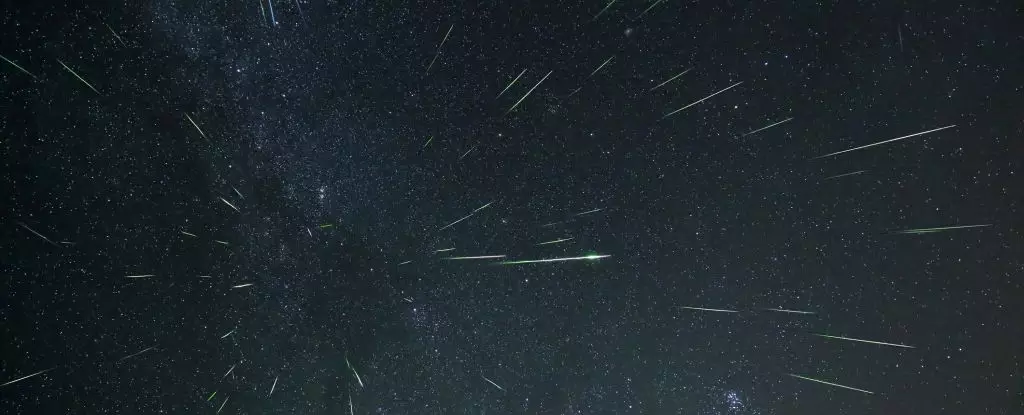As we transition into the months of April and May, stargazers and casual observers alike are treated to a mesmerizing spectacle of nature—two noteworthy meteor showers that promise to light up our night skies. The Lyrid meteor shower, which unfurls from April 17 to April 26, peaks on the nights of April 21 and 22. Similarly, the Eta Aquariids, occurring from April 20 to May 21 with its zenith on May 2 and 3, will enchant those located in the southern tropics. With little to no equipment necessary, these thrilling celestial events beckon us to turn our gaze upward, reminding us of the simple joys of appreciation for nature.
Understanding the Dance of Meteors
Meteor showers are captivating because they are grounded in a shared cosmic journey. As the Earth moves along its orbit around the Sun, it intersects with clouds of debris spanning the cosmos, remnants left by comets and asteroids. These tiny particles enter our atmosphere at blistering speeds and burn up, creating luminous streaks that we recognize as meteors. This annual performance—timed carefully as Earth passes through the scattered remnants—does not merely highlight random cosmic events; rather, it gives us a glimpse into the ancient paths traced by these celestial wanderers.
The Historical Context of the Lyrids
The Lyrid meteor shower has its roots traced back to a comet named C/1861 G1 (Thatcher), which orbits the Sun approximately every 422 years. While these timeframes might feel immense on a human scale, they exemplify the rivers of time within celestial mechanics. The meteor shower’s radiant point emerges near the constellation Lyra, delivering an inviting reminder of how our ancestors would have observed the same stars. This year, the Lyrids will face the challenge of a waning moon—hovering at about 40% visibility—which might obscure some meteors, but this moon will also provide a unique ambiance as it creates a gentle glow in the backdrop. Observers are encouraged to find a comfortable spot, looking northward, particularly on the night before moonrise for optimal visibility—a moment that will connect them through history to countless generations of starry-eyed dreamers.
The Allure of the Eta Aquariids
In contrast, the Eta Aquariids originate from the debris of the famed Halley’s Comet (1P/Halley), which has made headlines for its infrequent passages, gracing our skies every 76 years. With its radiant point located near the constellation Aquarius, the Eta Aquariids are particularly generous, gifting viewers in the southern hemisphere with the chance to witness between 50 and 60 meteors per hour at their peak. Those stationed in the northern hemisphere will find fewer meteors—a mere 20 per hour—serving as a gentle reminder of our planet’s pivotal location in the cosmic tapestry. To make the most of the viewing experience, enthusiasts should enlist available tools such as the International Meteor Organization’s resources and calendars that detail the ideal meteor shower viewing conditions throughout the year.
Maximizing Your Viewing Experience
While meteor watching requires no specialized gear, a few practical considerations can elevate the experience. Firstly, select a viewing location away from city lights—dark skies reveal meteors in stark contrast, enhancing the beauty of the occasion. Lying back comfortably to soak in the vastness above allows the body to relax while the eyes adjusting to the dark increases the chances of spotting these fleeting celestial visitors. Patience is key; the meteors may take time to present themselves, but the resulting awe and wonder are well worth the wait.
Connecting with the Cosmos
Participating in meteor showers is not just an astronomical event; it’s a reaffirmation of our shared existence within the universe. As we marvel at these occurrences, we cultivate a deeper appreciation for our surroundings, fostering a sense of wonder and curiosity about the cosmos. Each flash of light streaking across the sky serves as an invitation to contemplate the mysteries that lie beyond our immediate experiences—reminding us that we are part of a much grander narrative unfolding across time and space.
This spring, whether you are a seasoned astronomer or a curious newcomer, grab a friend, find a dark patch outside, and revel in the celestial show—a reminder that some of life’s most beautiful moments are often woven into the fabric of our experiences, just waiting to be noticed.

